I am going to look at a number of artists to inspire my work for this project, because my images will follow a number of styles and disciplines. The first two artists are my inspiration for taking the ‘Environmental’ style portraits of my dad. I then looked at a more general artist for the more candid images I might take, before focusing on some landscape/abstract artists for the more sea-based imagery.
Arnold Newman
– my work is an expression of myself. It reflects me, my fascination with people, the physical world around us, and the exciting medium in which I work.
Arnold Newman, A Life in Photography
Arnold Newman is a prestigious American photographer who was born on the 3rd of March 1918 and died on the 6th June 2006 in Manhattan, New York. His most notable work is made up of many celebrated personalities including Marilyn Monroe, Pablo Picasso, Audrey Hepburn and Ronald Reagan, to name a few.

He was coined as the ‘Father of Environmental Portraiture’, due to his carving out of a niche in images of popular figures in their working/living environments. This work was certainly the root of Newman’s bountiful success in his medium and the inherent professionalism and vision in his images mean he is still widely regarded as one of the grand masters of 20th and 21st century modern art. His portrait of Russian composer Igor Stravinsky from 1946 (pictured below) was arguably the one that really kickstarted his career in high prestige portrait photography.

Newman’s extensive experience has earned him award upon award from multiple photographic institutions including The Lucie Awards, The Royal Photographic Society Centenary Award and The International Center of Photography, and his work has been displayed globally in a range of exhibitions in highly regarded museums and galleries.
My in-depth analysis of one of his images, the famed portrait of Alfred Krupp, can be found on this post.
I will use Newman’s work to inspire my portraiture aspects of my personal study because I think that his techniques create strong and meaningful images.
Thomas Lodin
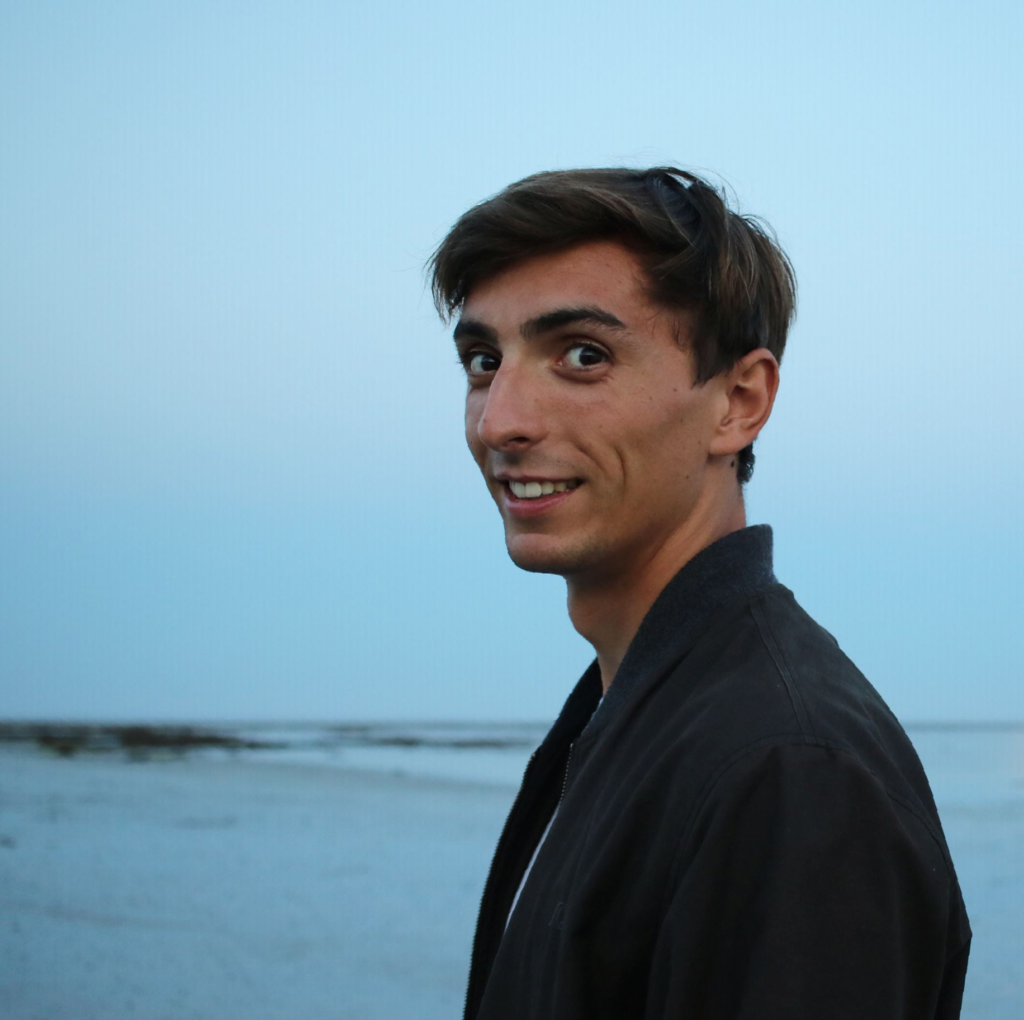
Based in Biarritz, France, and born in Nantes, France, Lodin is a surf photographer who, as well as focusing on the traditional aspects of the genre, also has a very distinctive style.
A lot of his images explore the culture and lifestyle that surrounds surfing. These are the pictures I hope to take inspiration from. He uses film for these images, and if I wish to replicate this look I may be able to buy a waterproof disposable camera, but if not, I can always edit to give the same effect (or, indeed, leave them as they are). This interview explores this sector of his work. I think it is important to note that he chooses only to shoot on film when shooting for fun; he thinks that digital images are more professional. I think that this is true to an extent, but there is certainly something to be said for the grainy nostalgia of a good film photograph. This therefore is why I may choose to actually shoot on film for these images.

My analysis of Far Enough From Home, Anthony Harouet – Thomas Lodin
Hiroshi Sugimoto
Hiroshi Sugimoto is a photographer and architect born in February 1948, in Tokyo. His earliest known photos were taken of movie footage of Audrey Hepburn as he watched it in a cinema. He studied Fine Art at the Art Center College of Design in Pasadena, California, before moving to New York, where he became a dealer of Japanese antiques.
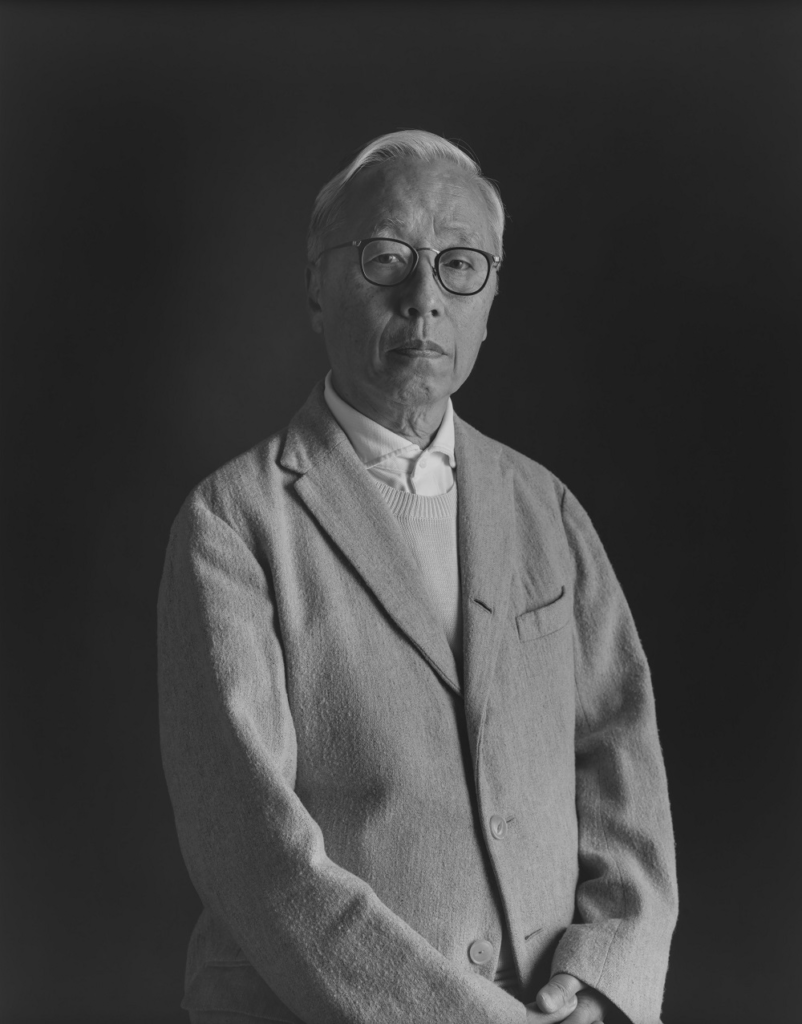
I am particularly interested by Sugimoto’s Seascapes series, taken from the 1980s to its publication as a photobook in 2015. His images are simplistic, minimalist, and contemplative. They draw on the coincidence of light, weather, calmness, and exposure to create a surprisingly dynamic yet consistent series. As an architect, it is only natural that Sugimoto should enjoy the culmination of line, shape, and form in his work, and this is demonstrated clearly in this project. Sugimoto travelled around the globe to capture the essence of each coastline through the lens of his old-fashioned large-format camera and varying lengths of exposure (up to three hours). The locations vary greatly; from Ireland to Italy, from Norway to Turkey.

Boden Sea Uttwil, 1993
All of the images are the same size and are split exactly in half by the horizon line. I enjoy Sugimoto’s images because I find beauty in their simplicity, and the use of a long exposure creates effects beyond the eye. The above image, Boden Sea, Uttwil, was selected by U2 as the cover for their album No Line on the Horizon. I will draw inspiration from this series for a few of my images in my personal study.
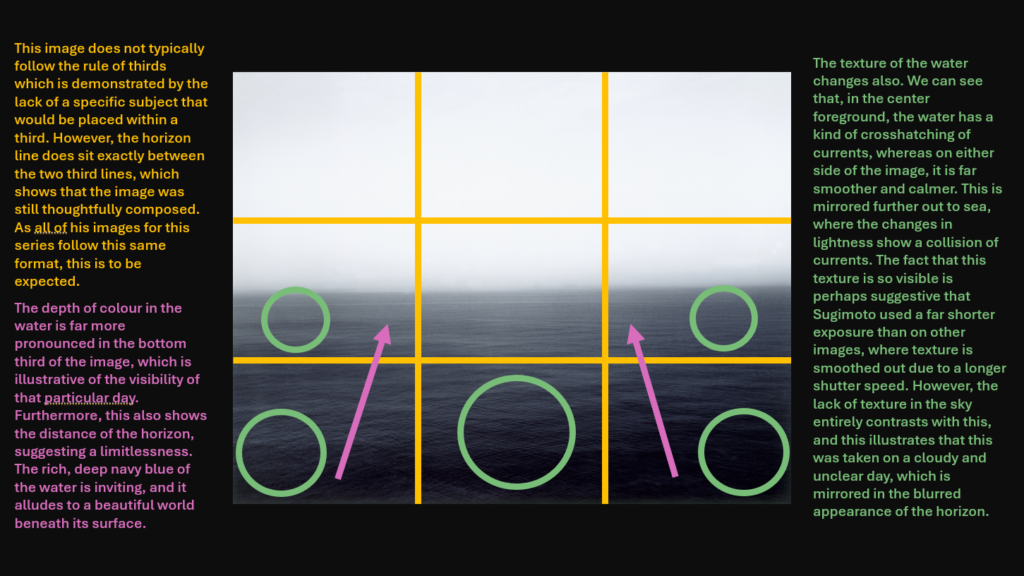
My analysis of one of Sugimoto’s Day Seascapes.
Fossils work almost the same way as photography… as a record of history. The accumulation of time and history becomes a negative of the image. And this negative comes off, and the fossil is the positive side. This is the same as the action of photography.
Hiroshi Sugimoto
Michael Marten

Born in London in 1947, Marten began taking photographs as a teenager. His first major project was Sea Change (2003-12). It has received numerous awards and been exhibited globally.
His images show the differences in landscape between high and low tides. I think these are interesting because they are demonstrative of all characteristics of a landscape between different weathers and times of day. I like these images and hope to use them as inspiration for the landscape component of my personal study.

Perranporth, Cornwall. 29 and 30 August 2007. Low water 12 noon, high water 8pm
Roni Horn
Born in New York in 1955, Roni Horn is a visual artist and writer whose work is critically acclaimed and exhibited widely throughout the western world.
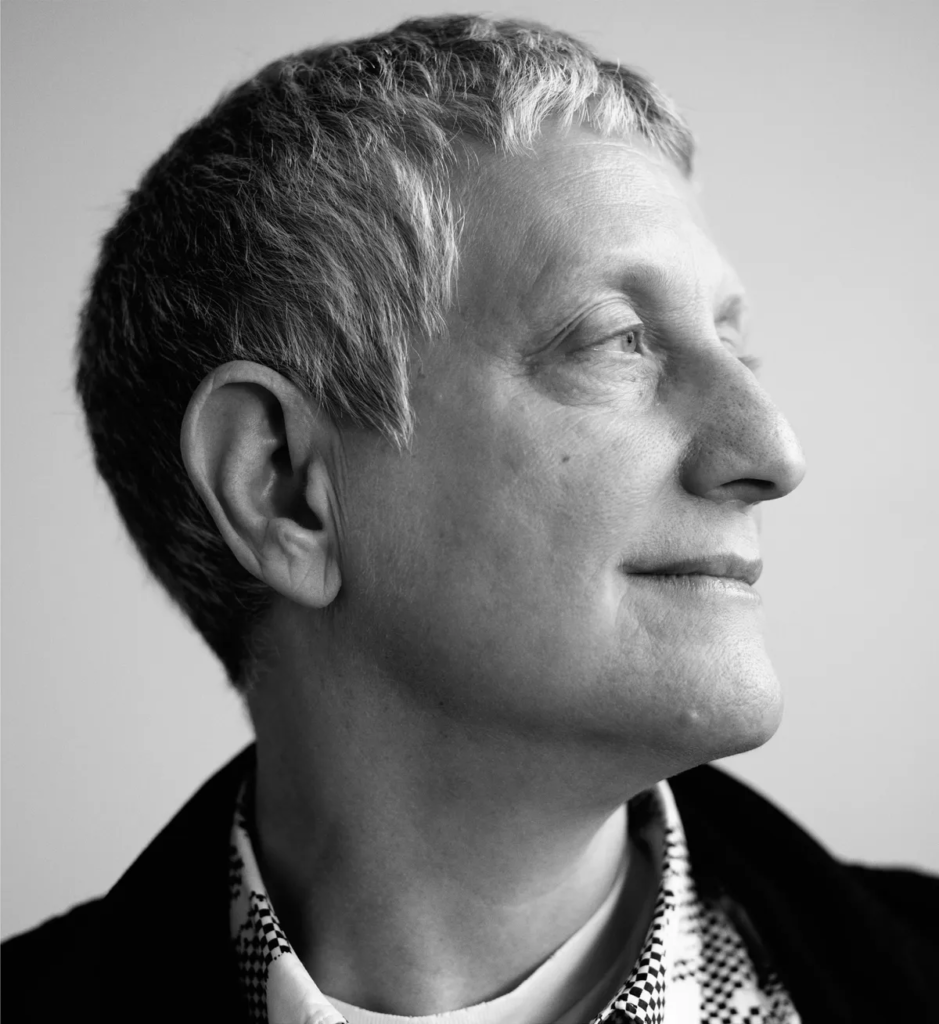
Horn mainly draws inspiration from her frequent visits to Iceland. She is fascinated by the geography, geology, climate and culture of the country, and it is the subject of her ongoing series of books, To Place (1990-). I am particularly focused on her series Dictionary of Water (winter and spring of 1999) and Still Water (The River Thames, for Example) (1999) because they are concerned with the perceptive capture of water and its textures. As a writer, Horn presents her images alongside text and footnotes that explore the unspoken ‘language’ of water (which inspires the name of the former).

This video explores Horn’s relationship with and thoughts on water, and why she thinks it is such an interesting subject for her to photograph. I will take inspiration from her work and her philosophies on water for my personal study because I think this focus on details and the meanings behind them is precisely what I would like to convey for my project. The idea of water being so much more than just water is integral to my study, as I am aiming to entirely present it in this way.
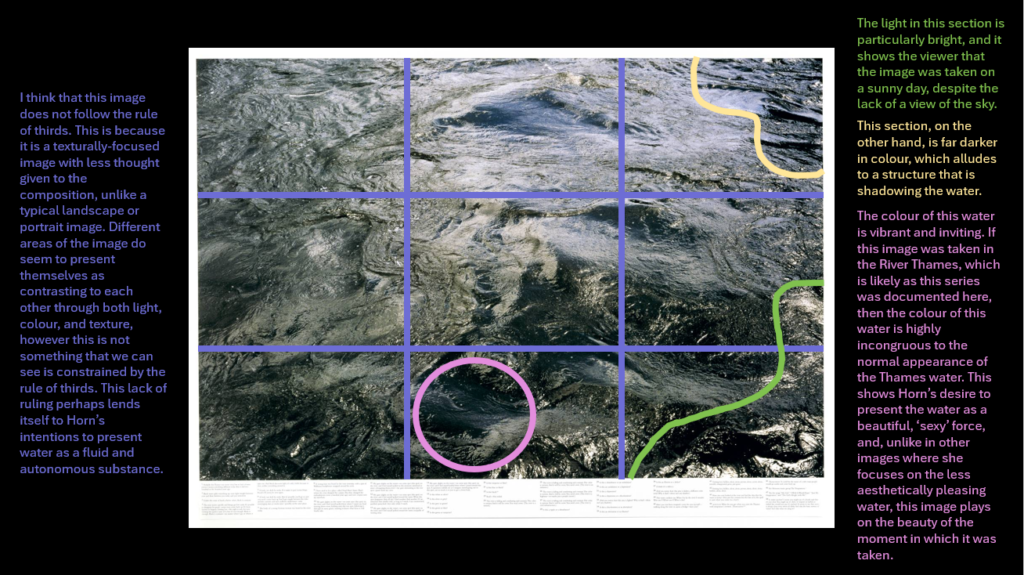
My analysis of Roni Horn’s work.
‘Thinking about water is thinking about the future.’
Roni Horn

Excellent blog post Pip, a lot of effort, well done!
Keep going >